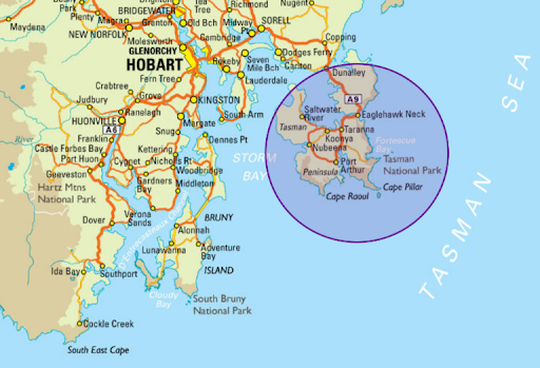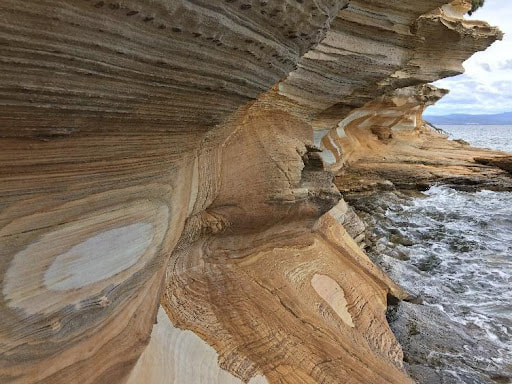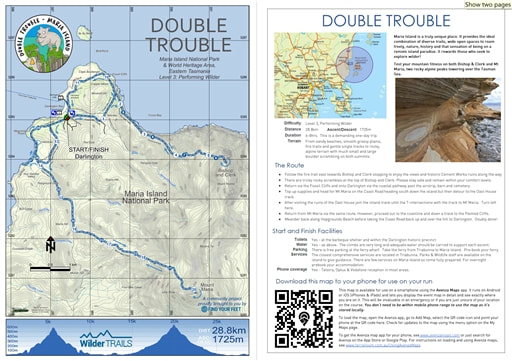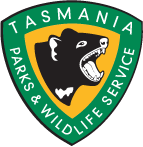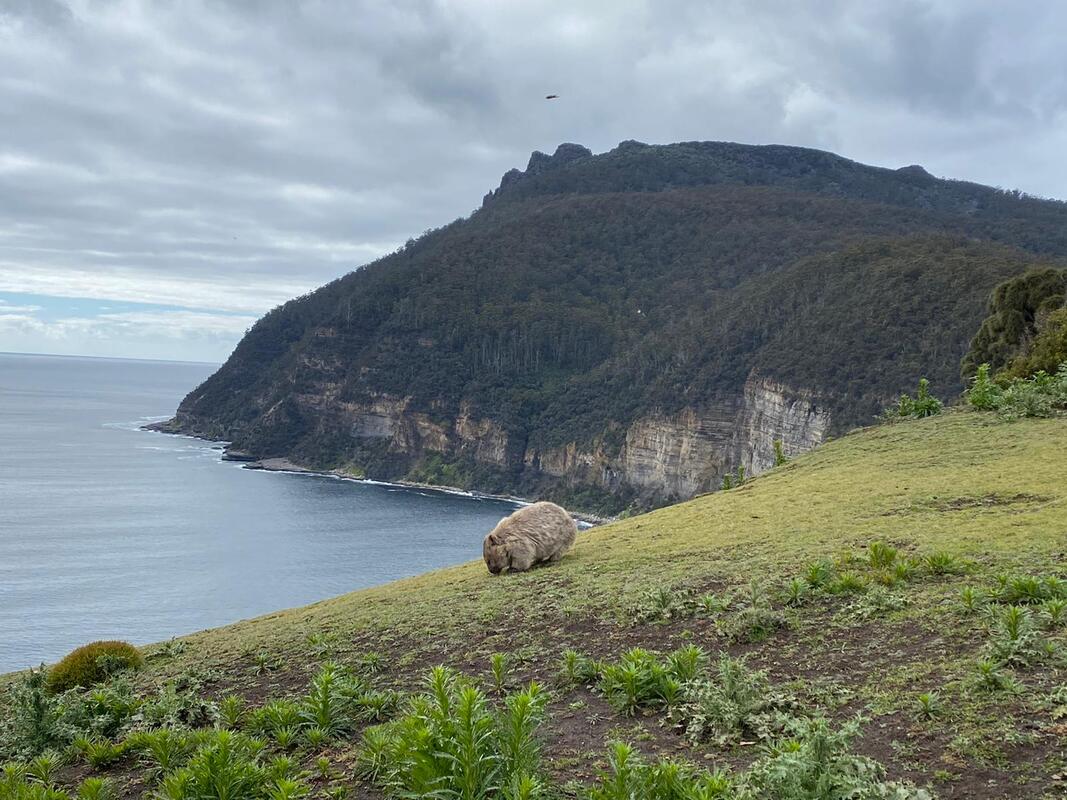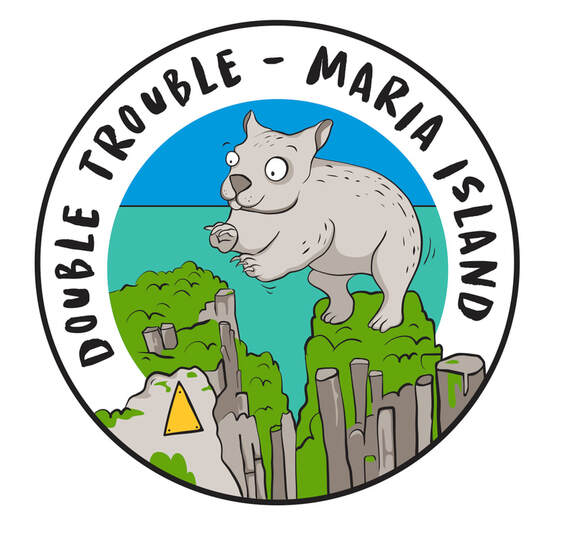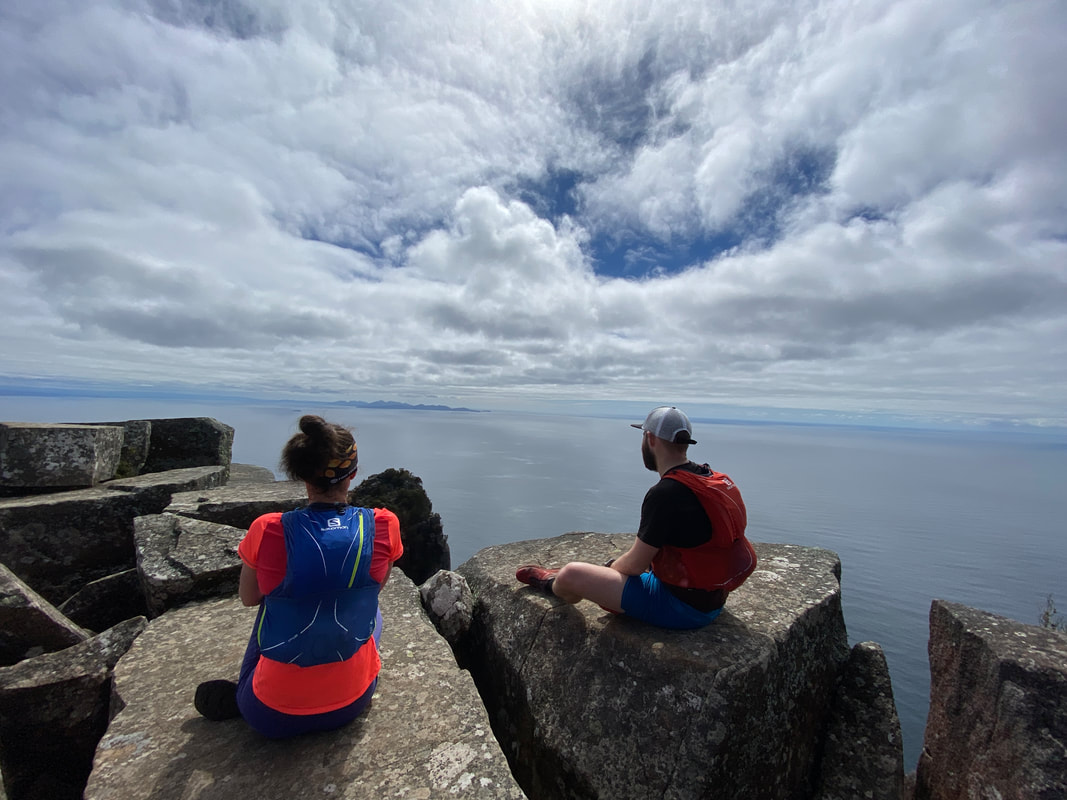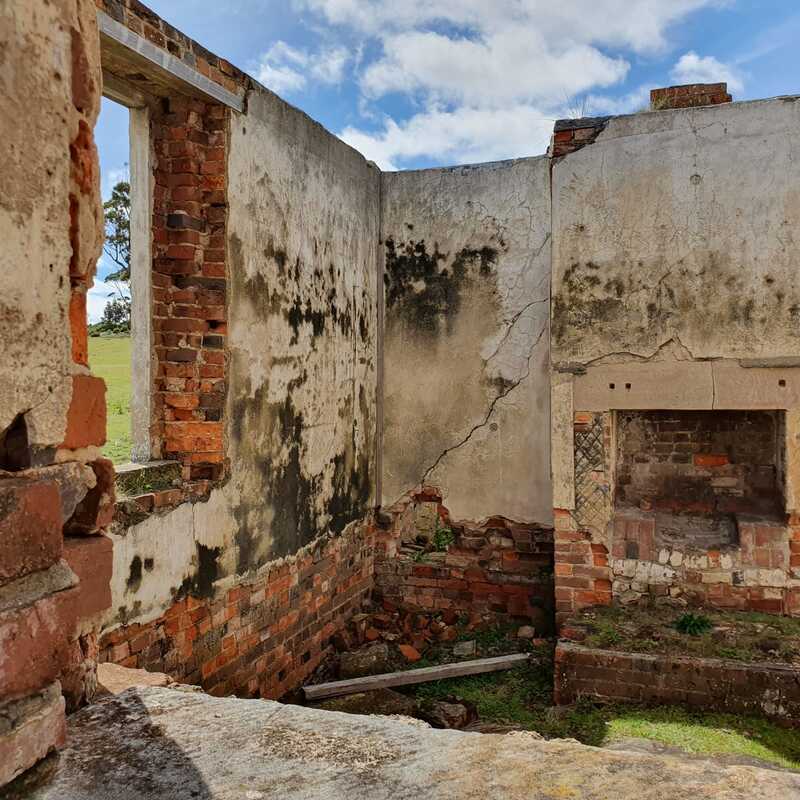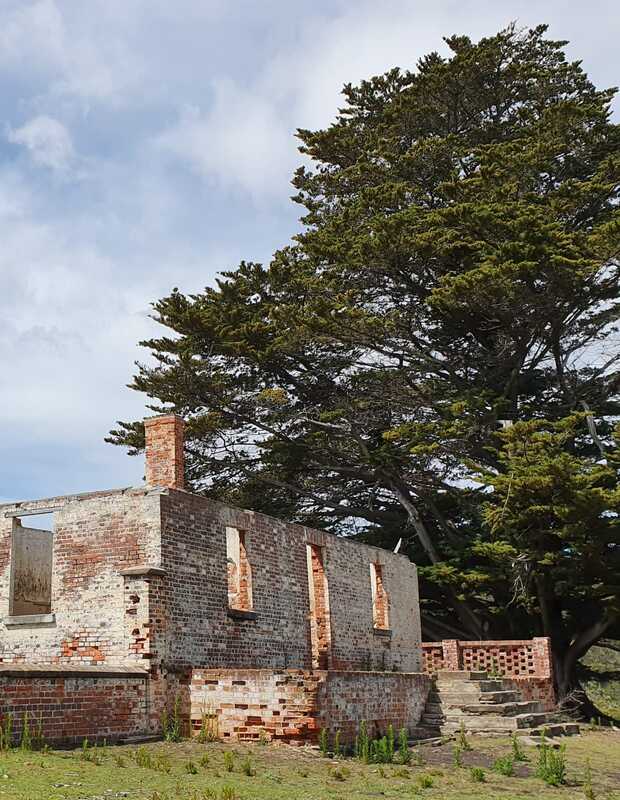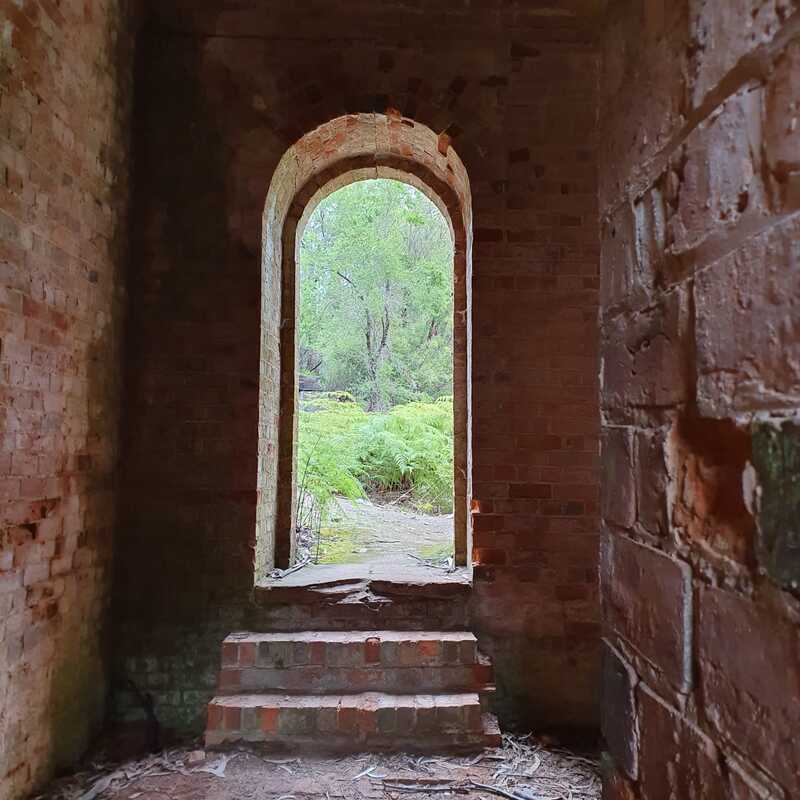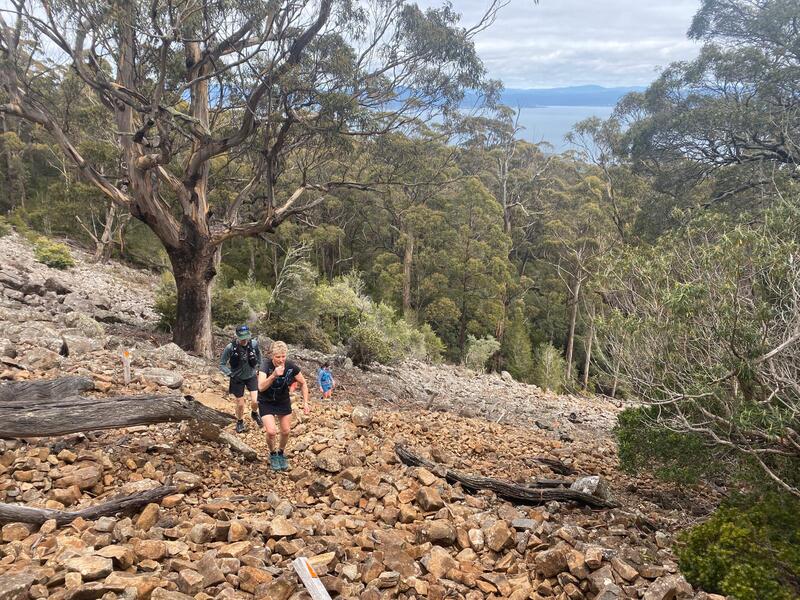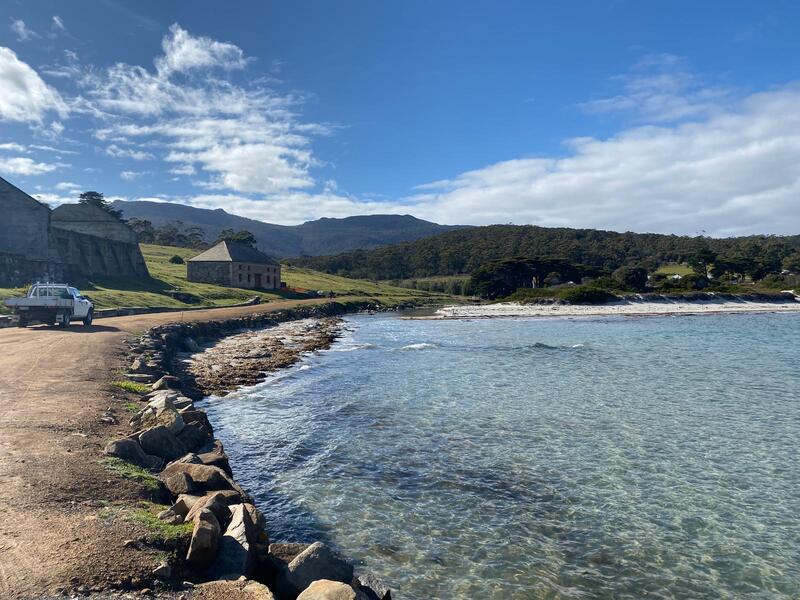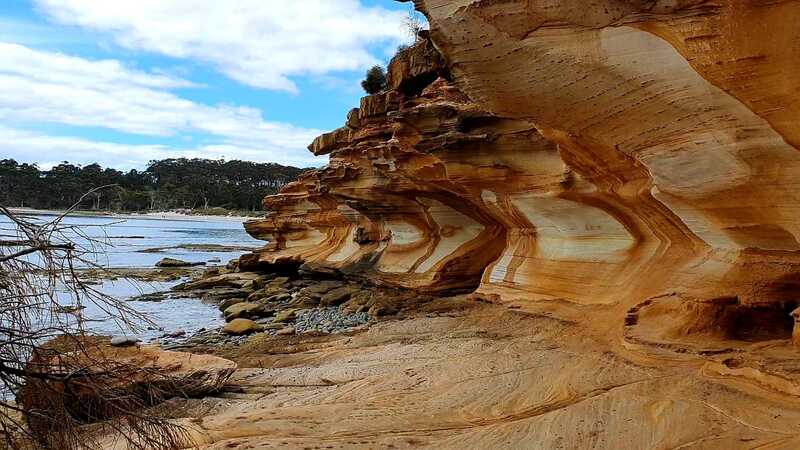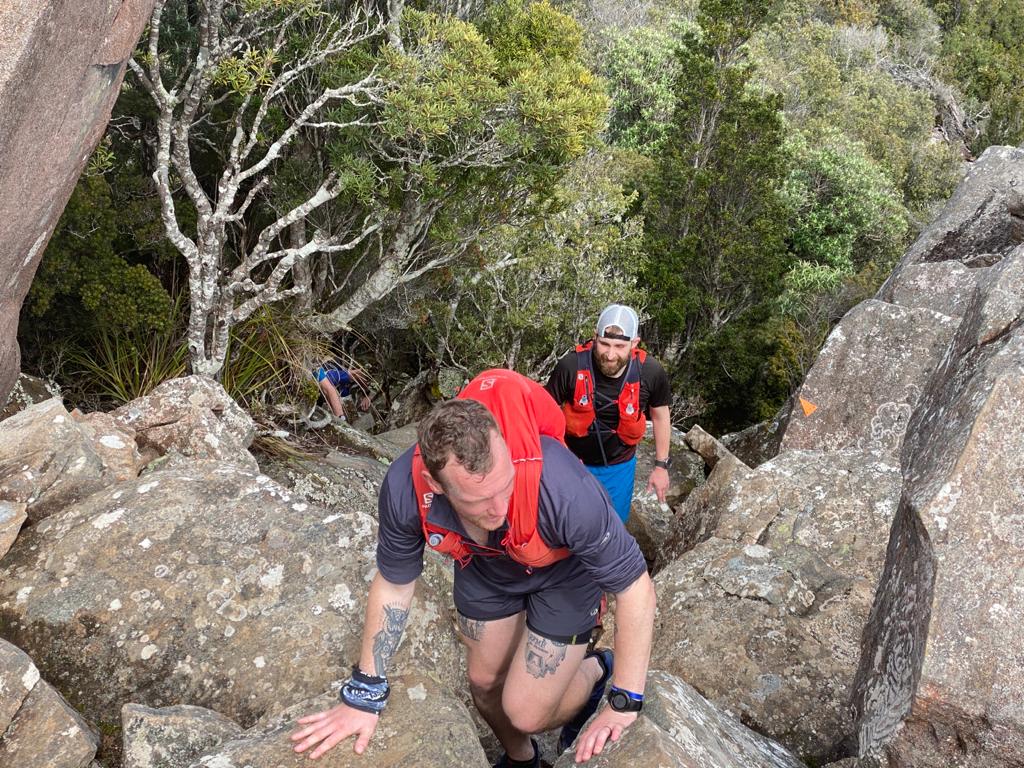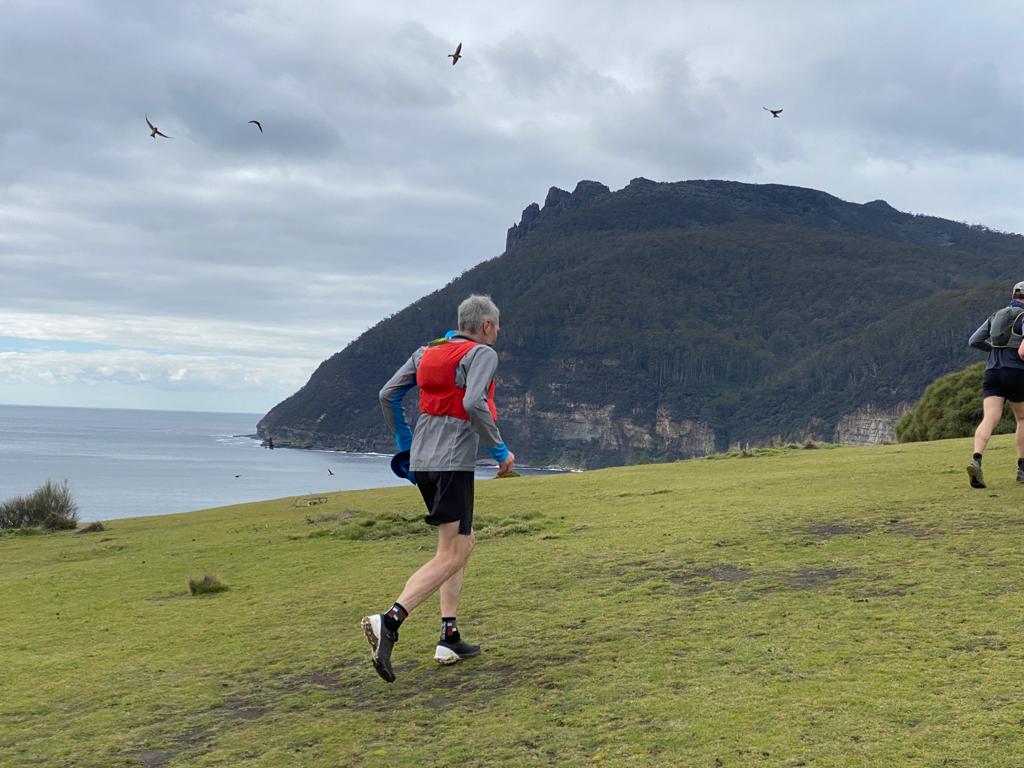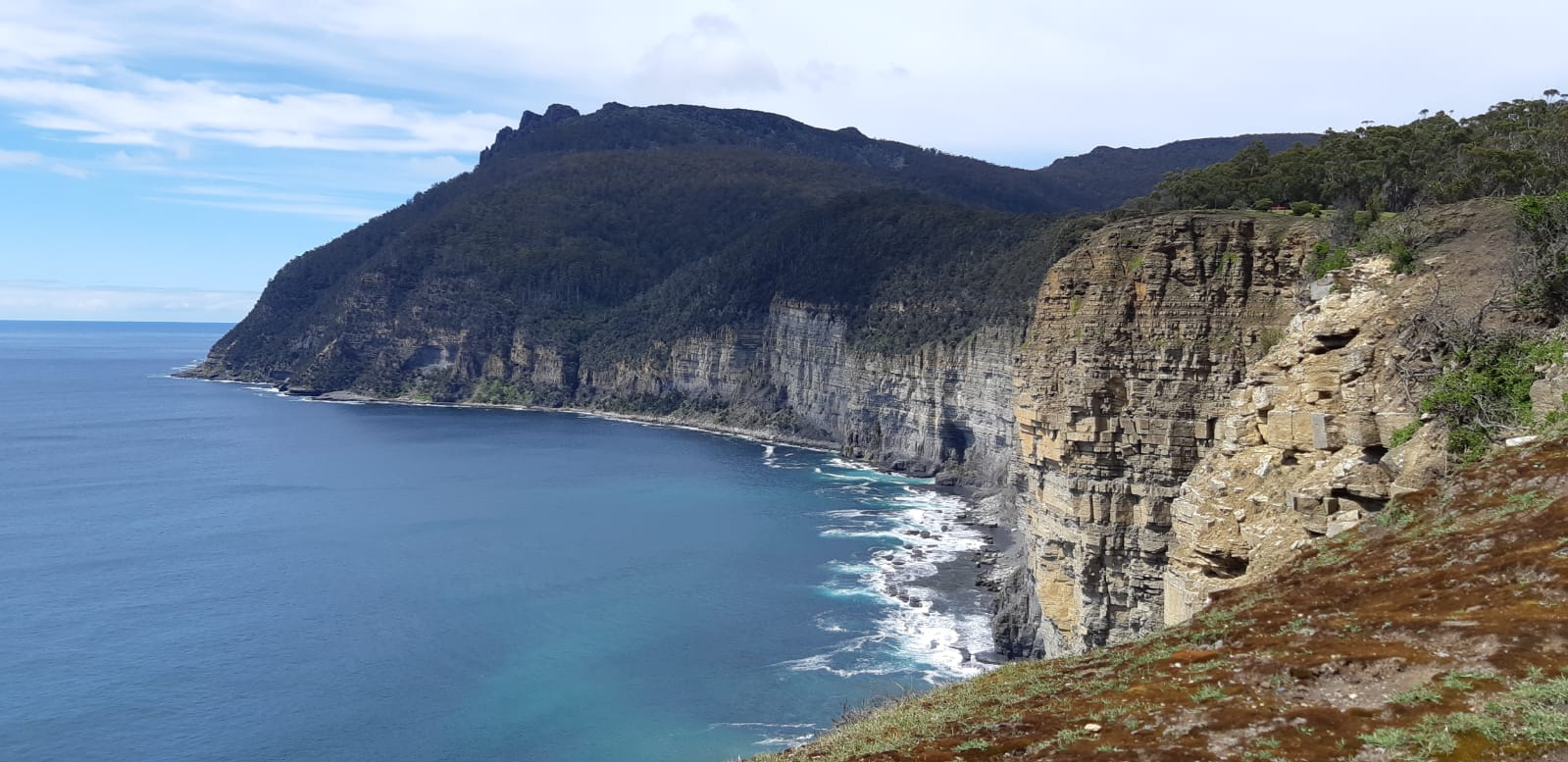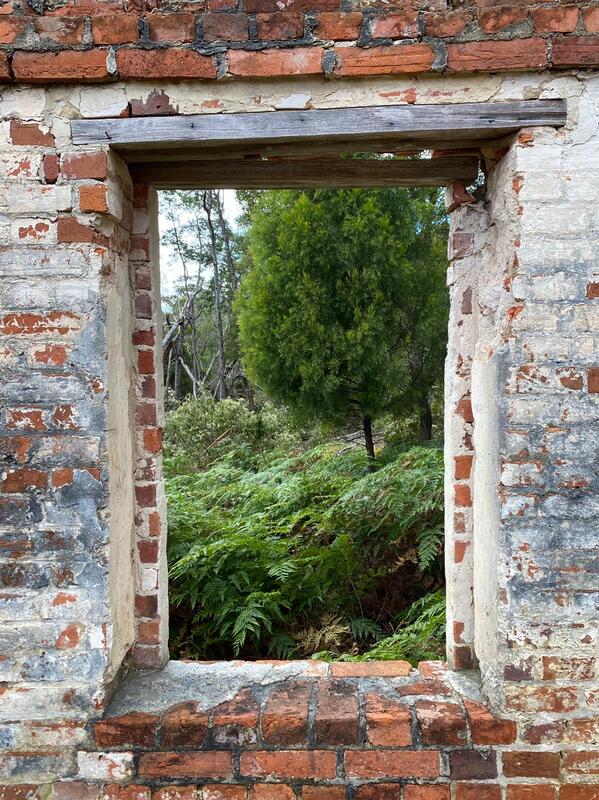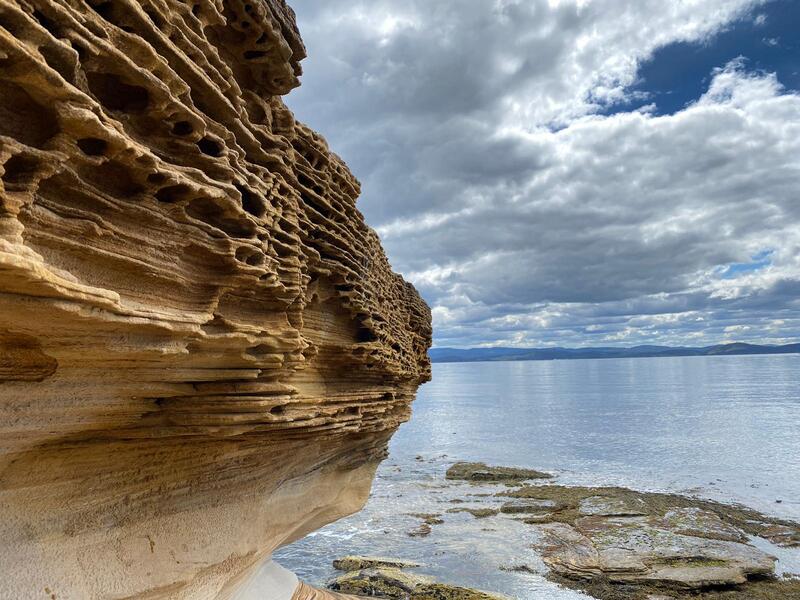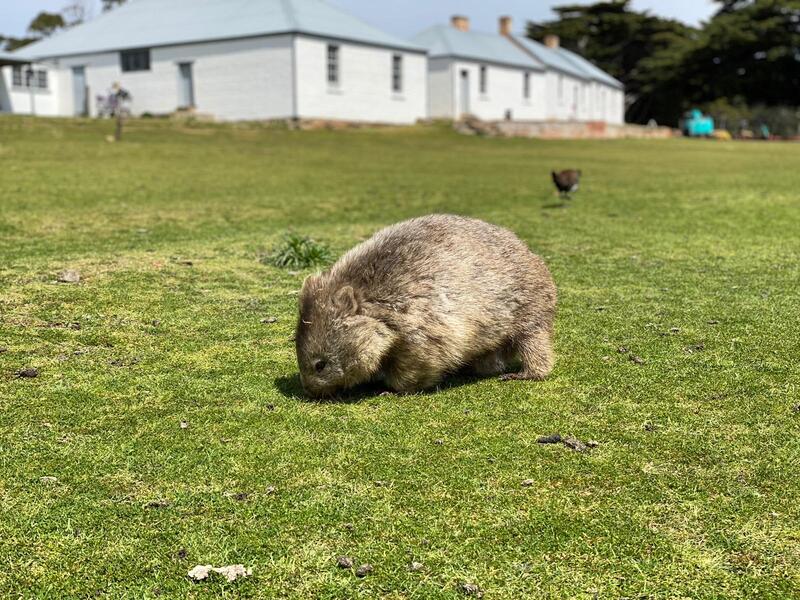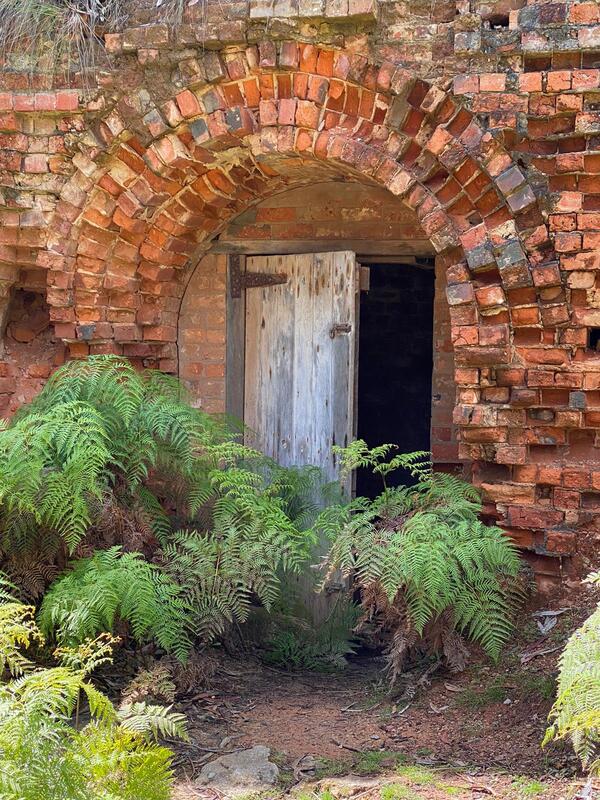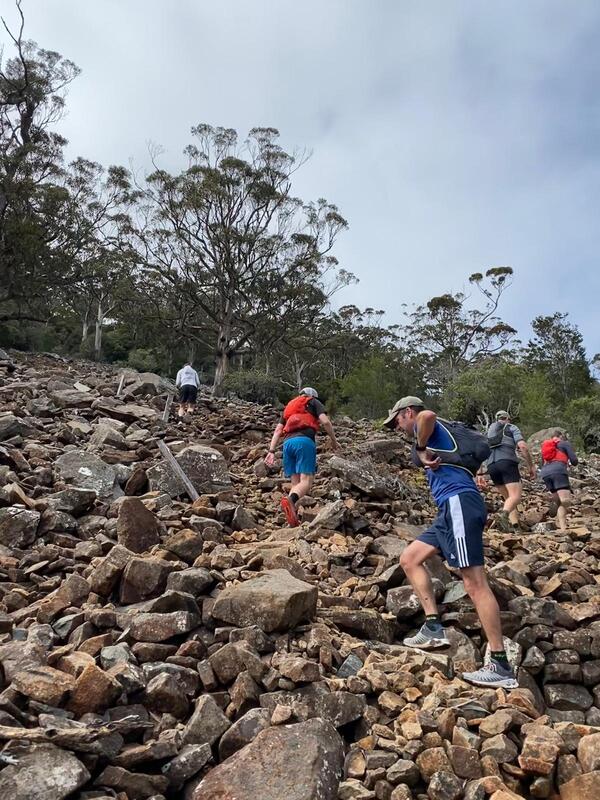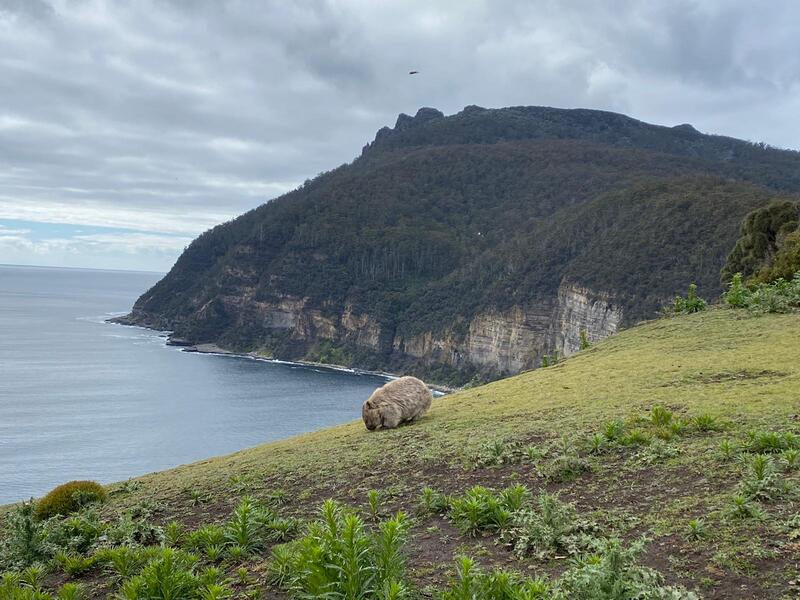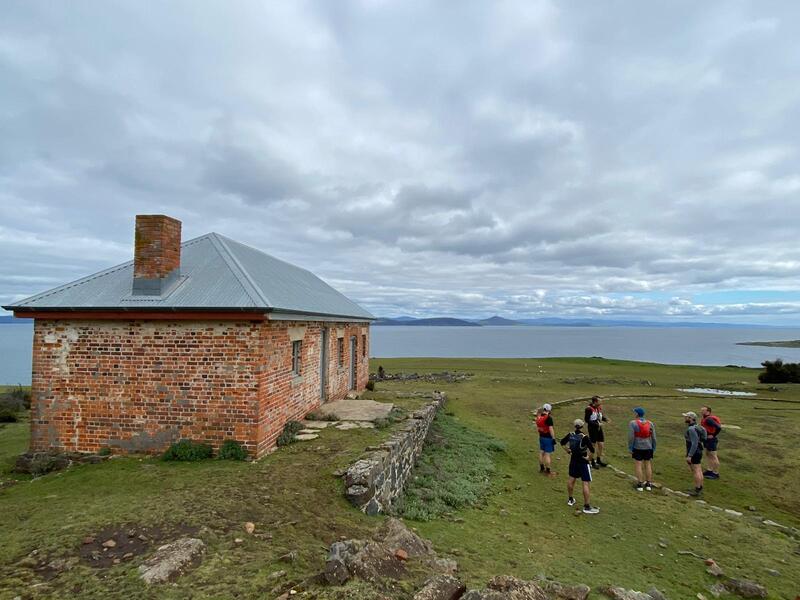DOUBLE TROUBLE
|
Maria Island is a truly unique place. It provides the ideal combination of diverse trails, wide open spaces to roam freely, nature, history and that sensation of being on a remote island paradise. It rewards those who seek to explore wilder!
The route begins in the Darlington historic precinct and then climbs to the summit of Bishop & Clerk via the Fossil Cliff tops. It returns the same way before taking a detour via the lower slopes of the Fossil Cliffs where you can browse amongst the rocks for fossils. From here you can return to Darlington for a rest and to refill your supplies, before heading towards Mt Maria via the Oast House, a quiet nook of the island. From the summit of Mt Maria you will catch remarkable views to the southern isthmus of the island, as well as mainland Tasmania. Returning from Mt Maria your final stop will be the Painted Cliffs. Hopefully you will arrive at low tide and be rewarded with the ability to hop carefully under the cliffs to catch their full beauty. The final stretch will be a short run over the hill to Darlington for a well-earned swim! |
|
Overview
Difficulty Level 3, Performing Wilder Distance 29.7km Ascent 1727m Descent 1727m Terrain From sandy beaches, smooth grassy plains, fire trails and gentle single tracks to rocky, alpine terrain with many small & large boulders. There are some short sections with rock scrambles, especially on Bishop & Clerk. The terrain is varied but should not be underestimated on the mountain peaks. Approx. Duration 6-8hrs |
The Route
- Take the ferry from Triabunna to Maria Island. There is free parking at the Triabunna wharf. You can choose to go for the day or you can camp overnight on Maria Island. Overnight accommodation is camping or staying in the very basic penitentiary, both of which must be booked via Parks Tasmania. We also recommend pre-booking you ferry departure and return journeys.
- On arrival in Darlington walk up to the main historic settlement where we recommend leaving any personal belongings that you don't require on the run at the Mess Hall. Ask a friendly Parks staff member if you need assistance. You can also get basic maps of the island and Darlington settlement from the information centre at the wharf in Triabunna.
- Embark on your day's mission, following the fire trail east towards Bishop and Clerk. Continue to its summit but stop to enjoy the views and historic ruins along the way. Note, there are some boulder fields and rocky scrambles at the top of Bishop and Clerk. Please stay safe and remain within your comfort levels. This section of the track is best avoided in wet weather.
- Return from Bishop and Clerk via the lower sections of the Fossil Cliffs. You will note a small, marked track that leads you down to their base where you can search for fossils.
- Return to Darlington via the grassy coastal pathway past the airstrip, barn, cemetry and ruins of the Grand Hotel. Ensure that when you get back to Darlington you refill your water supplies, nutrition, suncreen and supplies for part two of this route, Mt Maria.
- Depart for Mt Maria on the main fire trail heading south down the island but veer left towards the Oast House. This is a scenic, quiet route that is less travelled and will reunite you with the track to Mt Maria.
- After visiting the ruins of the Oast House continue along its pathway until it T-intersections with the track to Mt Maria. Turn left here and follow the signs to Mt Maria's summit. Note, the track gets very rocky on its upper sections. This section of the track is best avoided in wet weather.
- Return from Mt Maria via the same route. However, procede all the way out to the coastline. From here take the track a short distance further to Painted Cliffs where you can relax in their slendour of colour and patterns.
- After visiting the Painted Cliffs meander back along Hopground's Beach before taking the main fire trail back up and over the hill to Darlington. Well done, you have completed our 29.7km Double Trouble route! It is now time for a swim and a well-earned rest!
Start and Finish Facilities
Toilets Yes - at the barbeque shelter and within the Darlington historic precinct
Water Yes - as above. The climbs are very long and ample water should carried to support each ascent.
Parking There is free parking at the ferry wharf in Triabunna
Services The closest services are located in Triabunna. There are Parks & Wildlife staff available on the island. There are no other services on Maria Island and you should come fully prepared.
Phone coverage Yes - Telstra, Optus & Vodafone reception in most areas.
Toilets Yes - at the barbeque shelter and within the Darlington historic precinct
Water Yes - as above. The climbs are very long and ample water should carried to support each ascent.
Parking There is free parking at the ferry wharf in Triabunna
Services The closest services are located in Triabunna. There are Parks & Wildlife staff available on the island. There are no other services on Maria Island and you should come fully prepared.
Phone coverage Yes - Telstra, Optus & Vodafone reception in most areas.
|
Mapping & directions for this route
We have created 4 easy ways for you to choose from to safely and enjoyably navigate your way around this route. From a physical map to the more technology savvy, we have your safety at heart!
|
|
FREE TO DOWNLOAD
|
Digitally interactive map for use on your smartphone (FREE)
This map is available for use on a smartphone using the Avenza Maps app. It runs on Android or iOS (iPhones & iPads) and lets you display the route map in detail and see exactly where you are on it. This will be invaluable in an emergency or if you are just unsure of your location on the course. You don’t need to be within mobile phone range to use the map as it’s stored locally. To load the map, open the Avenza app, go to Add Map, select the QR code icon and point your phone at the QR code here. To get the Avenza map app for your phone, see www.avenzamaps.com or just search for Avenza on the App Store or Google Play. For instructions on loading and using Avenza maps, see www.terrainium.com.au/UsingAvenzaMaps |
Concluded the route? Don't forget to get your completion badge or lapel pin!
About the Maria Island National Park and World Heritage Area
With thanks to the Tasmanian National Parks & Wildlife Service for access to the following information...
Overview
The story of Maria Island is dominated by the ocean: from the rise and fall of the sea that created the island and left a legacy of creatures fossilised in its cliffs, to the history of its human occupation.
The Darlington historic settlement is the most intact example of a convict probation station in Australia, and a World Heritage Australian Convict Site. You can visit convict buildings dating back to 1824 and ruins that reveal key features of the convict probation system. Rediscover the fascinating history through interpretive displays at the Coffee Palace Museum and Commissariat Store.
The Maria Island Marine Reserve protects a range of beautiful marine life and is home to a diverse range of plant, invertebrate and fish communities, making it a fabulous place for swimming and snorkelling, or a ramble among the rockpools. Some of the best examples of this is swimming straight off the beach or jetty at Darlington after your Double Trouble adventure!
The Darlington historic settlement is the most intact example of a convict probation station in Australia, and a World Heritage Australian Convict Site. You can visit convict buildings dating back to 1824 and ruins that reveal key features of the convict probation system. Rediscover the fascinating history through interpretive displays at the Coffee Palace Museum and Commissariat Store.
The Maria Island Marine Reserve protects a range of beautiful marine life and is home to a diverse range of plant, invertebrate and fish communities, making it a fabulous place for swimming and snorkelling, or a ramble among the rockpools. Some of the best examples of this is swimming straight off the beach or jetty at Darlington after your Double Trouble adventure!
Cultural heritage
As you cross to the island you follow in the wake of Aboriginal people, who for thousands of years made regular canoe crossings to the island they knew as wukaluwikiwayna. For more than 35,000 years Aboriginal people have lived in the homelands of the Oyster Bay nation, the Tasmanian Aboriginal people from Maria Island were known as the Puthikwilayti.
Maria Island’s landscape is a microcosm of unique cultural heritage found within Tasmania; rich, varied and significant. This heritage and the associated stories play an important role in raising awareness about the past, celebrating the present and learning for the future. Today's Aboriginal community continue their people's connection to this special island.
Maria Island became a penal settlement in 1825 and was soon infamous for the number of escapes across the water. From 1842 Maria was used as a convict probation station, but by 1850 this mainly agricultural station was abandoned.
Maria Island's potential captured the imagination of Italian entrepreneur, Diego Bernacchi, who set up a cement works to utilise the island's limestone deposits in the late 1800s. The following period saw the development of industry, as well as the growth of a small farming and fishing community – all which has since closed down.
The first moves were made towards forming a fauna reserve in the early 1960s. Maria Island was officially declared a national park in 1971.
The significance of the convict probation era at Darlington was recognised in 2010 by World Heritage Listing as part of the Australian Convict Sites World Heritage Property. More information on World Heritage listings can be found on our Tasmanaian Wilderness World Heritage Area (TWWHA) page, and on the Heritage Tasmania website.
You can learn more about Maria's history at the old Commissariat Store in Darlington, which houses the displays and information.
Maria Island’s landscape is a microcosm of unique cultural heritage found within Tasmania; rich, varied and significant. This heritage and the associated stories play an important role in raising awareness about the past, celebrating the present and learning for the future. Today's Aboriginal community continue their people's connection to this special island.
Maria Island became a penal settlement in 1825 and was soon infamous for the number of escapes across the water. From 1842 Maria was used as a convict probation station, but by 1850 this mainly agricultural station was abandoned.
Maria Island's potential captured the imagination of Italian entrepreneur, Diego Bernacchi, who set up a cement works to utilise the island's limestone deposits in the late 1800s. The following period saw the development of industry, as well as the growth of a small farming and fishing community – all which has since closed down.
The first moves were made towards forming a fauna reserve in the early 1960s. Maria Island was officially declared a national park in 1971.
The significance of the convict probation era at Darlington was recognised in 2010 by World Heritage Listing as part of the Australian Convict Sites World Heritage Property. More information on World Heritage listings can be found on our Tasmanaian Wilderness World Heritage Area (TWWHA) page, and on the Heritage Tasmania website.
You can learn more about Maria's history at the old Commissariat Store in Darlington, which houses the displays and information.
European Culture
Bernacchi wished to introduce sericulture [the rearing of silkworms for the production of silk] to the colony and chose Maria Island, which enchanted him. In April the family moved to the former convict settlement of Darlington at the north of the island. Although many colonists were suspicious of the charming, persuasive Italian, the Maria Island Leasing Act was passed on 24 November 1884 granting Bernacchi a lease from 1 January 1885 for ten years at one shilling a year. - The Australian Dictionary of Biography
European explorers first caught sight of the island in 1642, but didn’t come ashore until 1789. John Henry Cox and Lieutenant George Mortimer (English explorers) were the first Europeans to step foot on the island and document the presence of Aborigines.
In 1825, fifty convicts were brought to the island by English soldiers. The settlement of Darlington held convicts who had reoffended and they were sentenced to hard labour.
Due mainly to frequent escape attempts, the settlement closed in 1832, only to re-open again some 10 years later. The second convict era lasted for eight years (1842 – 1850) with a focus on agriculture, industry and training. Once again convict rebellion was a factor that led to its closure.
The Darlington Probation Station is today, the most intact example of a convict probation station in Australia, and one of eleven convict sites recognised by UNESCO as a World Heritage Site.
In the 1880s Diego Bernacchi, an Italian businessman, leased the land with ambitious plans for agriculture, industry, and tourism (wine and concrete!). At it’s peak the island had a population of 500, many buildings were re-purposed and others were built. The concrete silos adjacent to the jetty remain as a prominent visual reminder of his entrepreneurial spirit.
Farming and fishing ventures followed the Italian’s failed business pursuits, and eventually the island was declared a National Park in 1972.
In 1825, fifty convicts were brought to the island by English soldiers. The settlement of Darlington held convicts who had reoffended and they were sentenced to hard labour.
Due mainly to frequent escape attempts, the settlement closed in 1832, only to re-open again some 10 years later. The second convict era lasted for eight years (1842 – 1850) with a focus on agriculture, industry and training. Once again convict rebellion was a factor that led to its closure.
The Darlington Probation Station is today, the most intact example of a convict probation station in Australia, and one of eleven convict sites recognised by UNESCO as a World Heritage Site.
In the 1880s Diego Bernacchi, an Italian businessman, leased the land with ambitious plans for agriculture, industry, and tourism (wine and concrete!). At it’s peak the island had a population of 500, many buildings were re-purposed and others were built. The concrete silos adjacent to the jetty remain as a prominent visual reminder of his entrepreneurial spirit.
Farming and fishing ventures followed the Italian’s failed business pursuits, and eventually the island was declared a National Park in 1972.
The company planned to establish a township and its intended interests included sericulture, wine-making, fruit-growing, farming, cement, limestone and marble, fisheries, and sheep and cattle fattening. Darlington, renamed San Diego, by 1888 was a boom town of about 250 people of a dozen nationalities. Buildings had been repaired and others erected, including a hotel and coffee palace. The island was dubbed ‘the Ceylon of Australasia, and a Tasmanian Eden’. - Tasmanian Times
Flora & Fauna
The island has always been home a variety of rare and unusual birds and animals and when a number of threatened species were released in the 1970s it became known as Tasmania’s Noah’s Ark. - The Maria Island Walk
From the moment you arrive, you'll begin to notice the special nature of the wildlife on this island. Since the late 1960s, a number of threatened species have been introduced as part of conservation efforts. The very things that once made the island a suitable convict settlement now make it an ideal refuge for plant and animal species under threat elsewhere. Alongside the native pademelons, who have always called Maria Island home, you'll be likely to spot forester kangaroos, Bennett's wallabies, Flinders Island wombats, Cape Barren geese and Tasmanian native hens.
Maria Island is also one of the best places in Tasmania for bird watching. All but one of the State's twelve endemic birds can be found on the island, including the endangered forty-spotted pardalote, green rosellas and the majestic wedge-tailed eagle. With sharp eyes you may spot tiny hooded plovers, sooty and pied oyster catchers, and little and fairy terns on the beaches.
A more recent addition are Tasmanian devils. Tasmanian devil numbers have declined dramatically State-wide due to Facial Tumour Disease and Maria Island National Park was chosen as a site for captive breeding, with 15 Tasmanian devils introduced to the Island in 2012. You can learn more about these conservation efforts on the Save the Tasmanian Devil Program website.
Maria island is well known for its asounding underwater diversity, please see our Maria Island Marine Reserve for more information.
Maria Island is also one of the best places in Tasmania for bird watching. All but one of the State's twelve endemic birds can be found on the island, including the endangered forty-spotted pardalote, green rosellas and the majestic wedge-tailed eagle. With sharp eyes you may spot tiny hooded plovers, sooty and pied oyster catchers, and little and fairy terns on the beaches.
A more recent addition are Tasmanian devils. Tasmanian devil numbers have declined dramatically State-wide due to Facial Tumour Disease and Maria Island National Park was chosen as a site for captive breeding, with 15 Tasmanian devils introduced to the Island in 2012. You can learn more about these conservation efforts on the Save the Tasmanian Devil Program website.
Maria island is well known for its asounding underwater diversity, please see our Maria Island Marine Reserve for more information.
We ask you to tread gently, remembering that we are visitor's to their habitats.
Help the the Maria Island National Park!
There are some active volunteer groups who help to preserve & protect the Maria Island National Park. We strongly encourage you to get involved!

